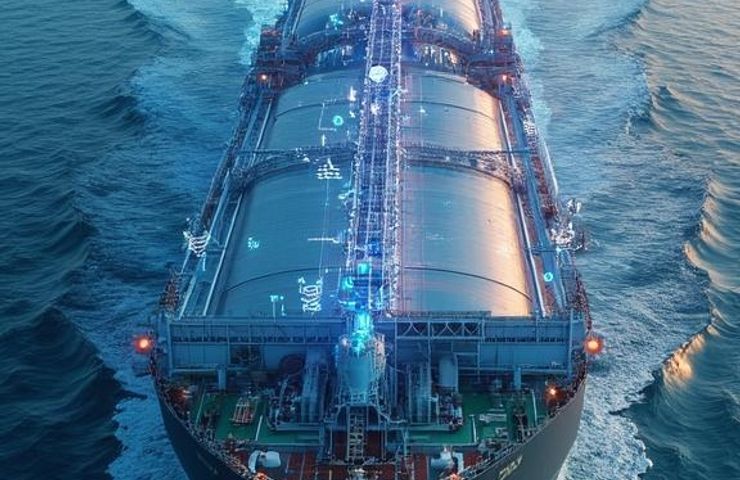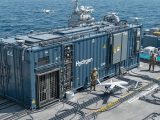
World’s Largest Ammonia-Fueled Carriers Signed by CIMC Enric: Zero-Emission Shipping Takes a Bold Turn
July 31, 2025Big Metal, Big Shift: China’s CIMC Enric Lands Milestone Deal for Green Shipping’s Next Big Thing
This isn’t just another big order in the shipbuilding world — it’s more like a cannonball splash in the pool of maritime decarbonization. On July 29, 2025, China’s CIMC Enric (through its Nantong-based subsidiary CIMC SOE) sealed the deal with Norway’s Amon Gas to build what’s set to become the world’s largest ammonia-fueled gas carriers. We’re talking two vessels (with options for two more), each with a massive 51,000 m³ capacity. This isn’t just about size — it’s about leading the charge toward zero-emission technology at sea.
Quick Take: Why This Matters
These aren’t some futuristic concepts pitched on a PowerPoint. They’re fully funded, engineered, and prepped for real-world action. The big headline? Both the main engines and the generator sets on these ships will run on clean ammonia — a first at this scale. That means serious cuts to greenhouse gas emissions and no diesel fallback for auxiliary power. It’s a big step forward in walking the talk on sustainability.
The Tech Behind the Transition
Each vessel is being equipped with ammonia dual-fuel engines and ammonia-ready generator sets. That’s not just making the propulsion cleaner — it’s cleaning up the ship’s internal energy use too. Add shaft generators to the equation, and you’ve got a more energy-efficient onboard power system that drastically reduces the need for conventional diesel-based support.
Ammonia might not be the perfect fuel just yet — it’s got downsides when it comes to handling and energy density — but when it’s made using renewable electricity, it becomes a weapon in the push for sustainable energy.
Strategic Value: More Than Just Ships
Each of the first two ships has snagged around NOK 90 million in government grant funding from Norway’s ENOVA, taking the total project value north of USD 160 million. Sure, that’s a big chunk of change — but it’s not just about money. It’s about making a move that puts Amon Gas (a collaboration between UK’s Navigator Holdings and Norway’s Amon Maritime) at the front of the green shipping revolution.
And for CIMC Enric, it’s another notch on the belt in clean marine innovation. Their Nantong shipyards are quickly becoming a powerhouse for clean ammonia and advanced liquefied gas shipping.
The Players: Credibility Counts
This isn’t some moonshot backed by startups pitching dreams. Amon Gas brings heavyweight backing. Navigator Holdings owns the largest handysize gas fleet on the planet, while Amon Maritime built its entire business around making ammonia-powered shipping a reality.
And with ENOVA stepping in, it’s clear that this project aligns with the national — and global — push toward meeting IMO emissions reduction goals. Momentum’s building, and the right people are steering the ship.
The Bigger Picture: This Is Just the Beginning
Since May 2025, CIMC Enric has been stacking up orders around clean energy offshore solutions. These ammonia-fueled medium gas carriers (or MGCs) might just be the first domino to fall. If that domino hits the right spot, expect a ripple effect across shipyards, fuel producers, port authorities — pretty much everyone in the maritime supply chain.
The Real Talk
Let’s be honest — ammonia isn’t without its issues. It’s toxic, tricky to work with, and the infrastructure to support it globally is still in its infancy. But if you’re serious about cutting carbon in deep-sea shipping before 2030, this is one of the few tech paths that actually makes sense.
Perfect? No. That’s not the point. This is about moving fast, learning on the fly, and proving that ammonia dual-fuel propulsion can play in the big leagues.
The Bottom Line
This isn’t just a shipbuilding contract — it’s a signal flare. Massive vessels, built for a cleaner future, are on the way. And once these giants leave the Nantong dockyards by 2028, the copycat orders won’t be far behind.
So here’s the question for ports, fuel suppliers, and regulators: Are you geared up for the shift? Because this moment isn’t about waiting to see what happens.
It’s about leading the charge.



 With over 15 years of reporting hydrogen news, we are your premier source for the latest updates and insights in hydrogen and renewable energy.
With over 15 years of reporting hydrogen news, we are your premier source for the latest updates and insights in hydrogen and renewable energy.